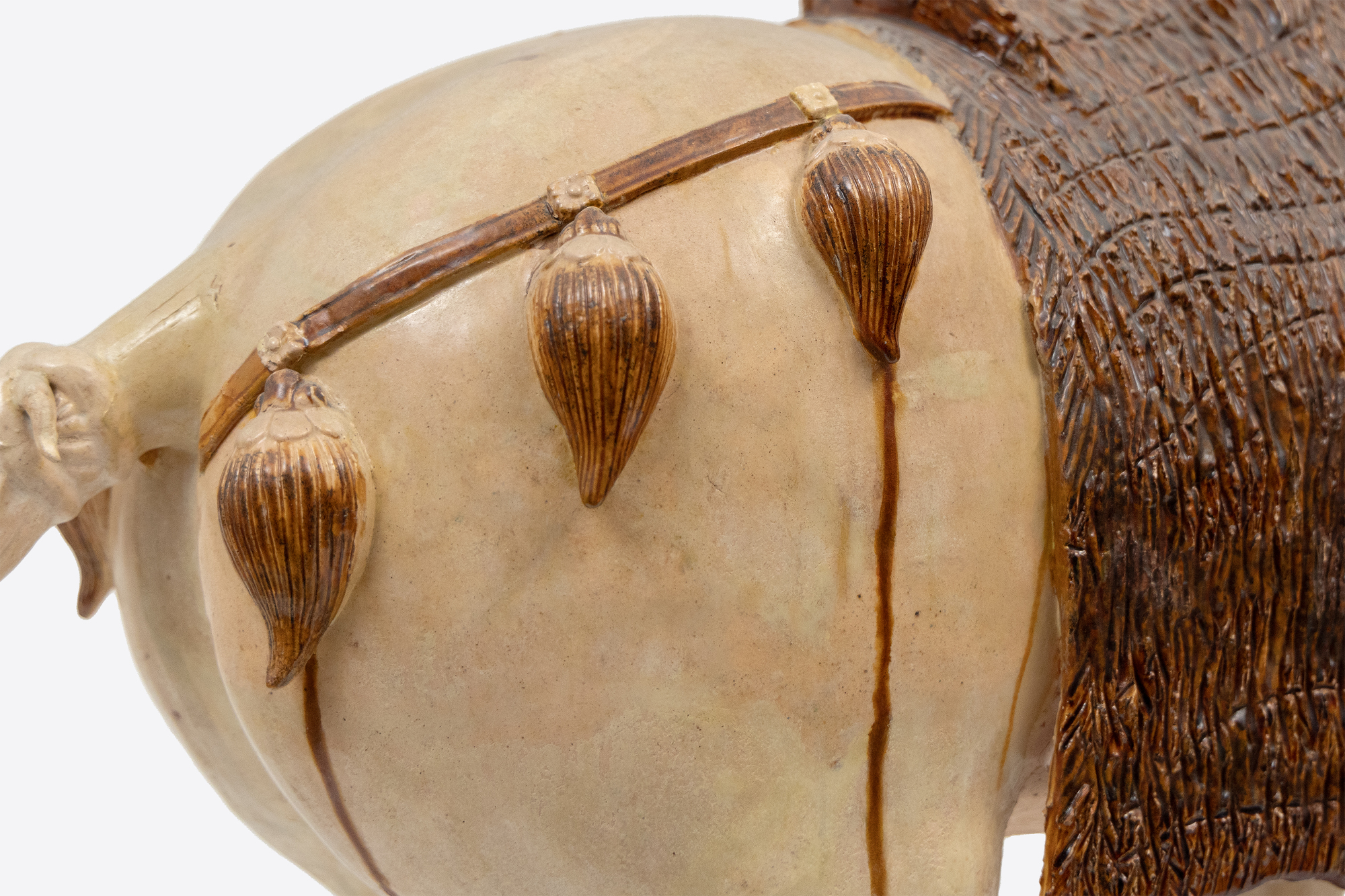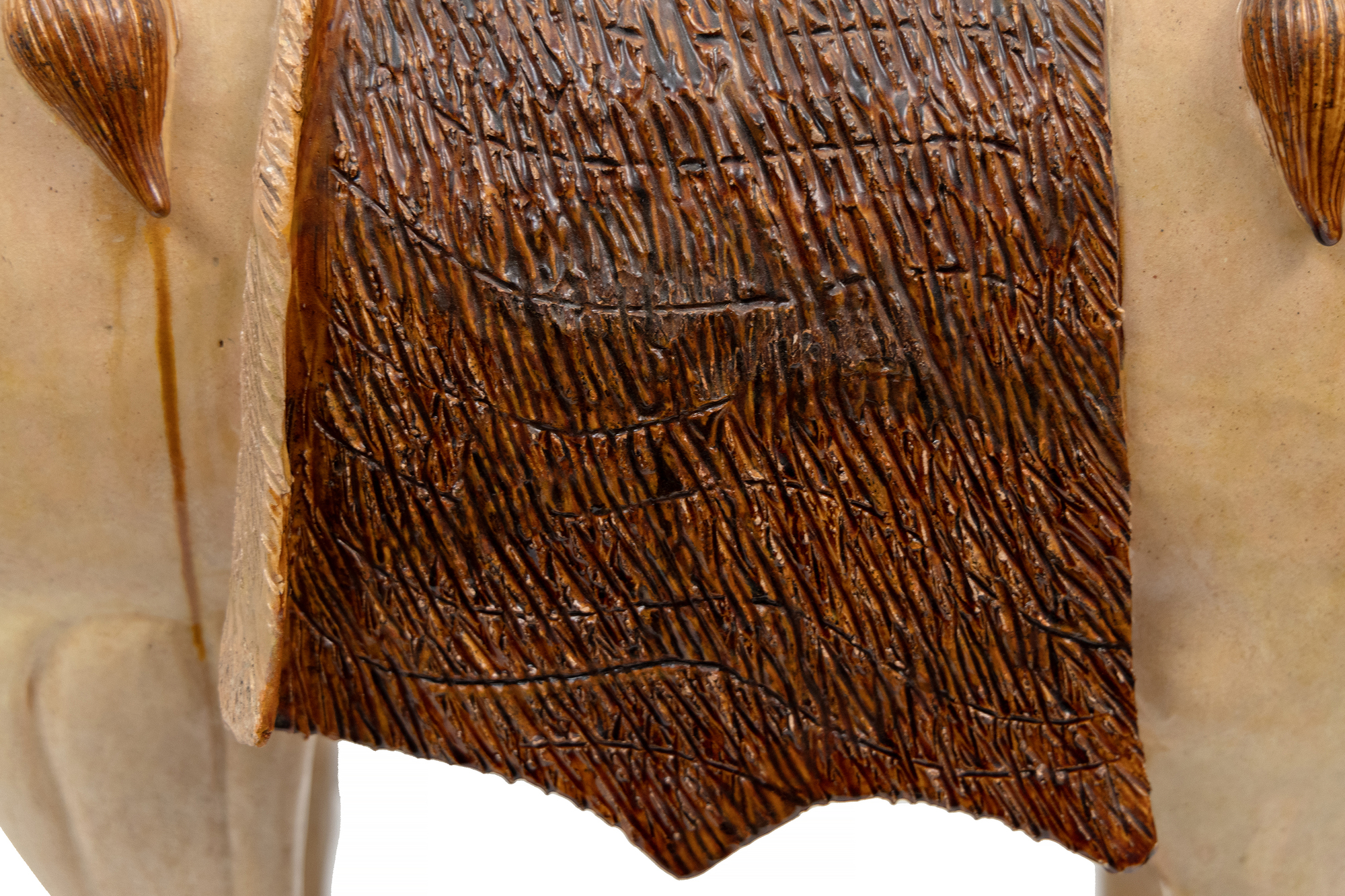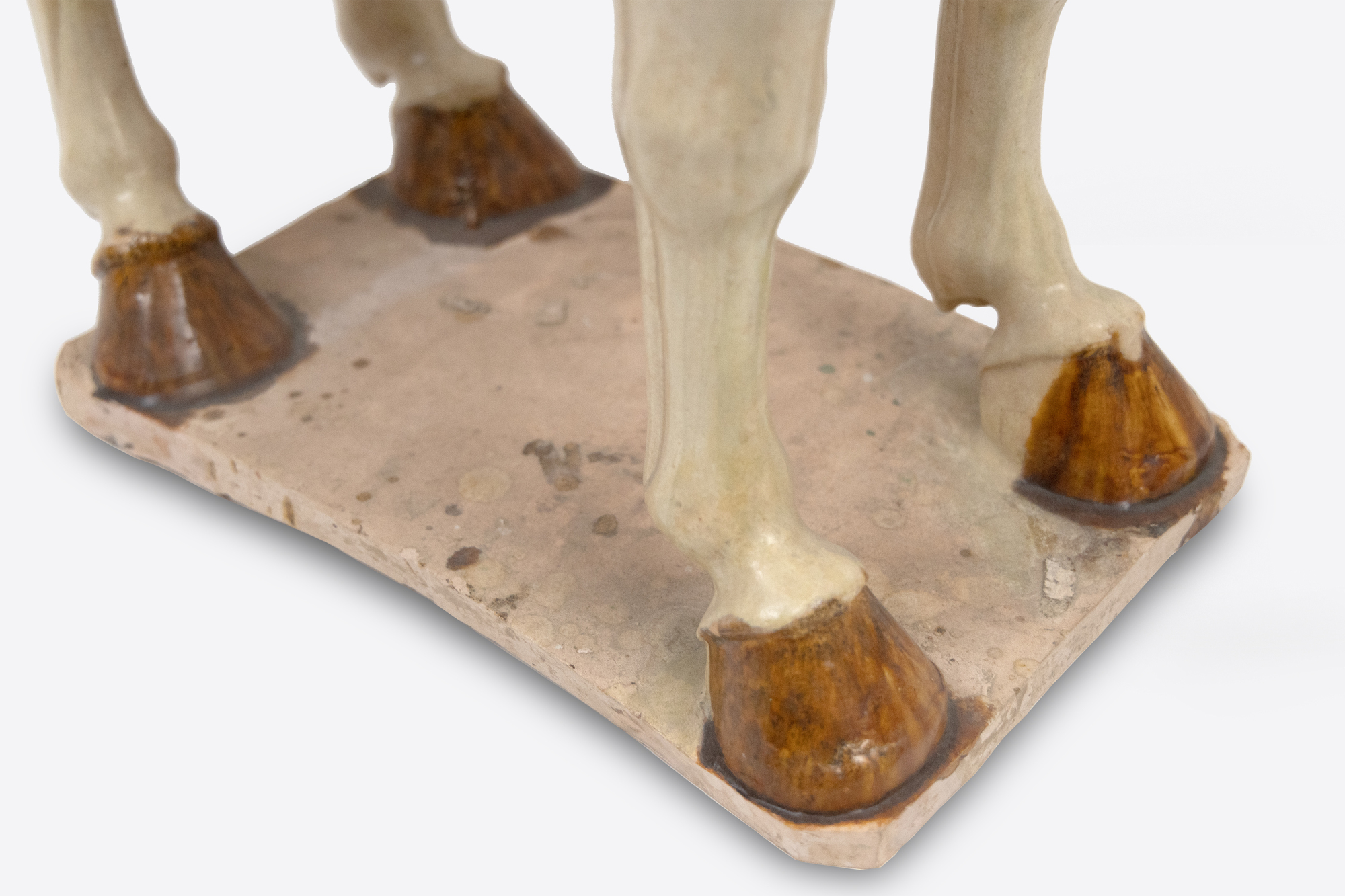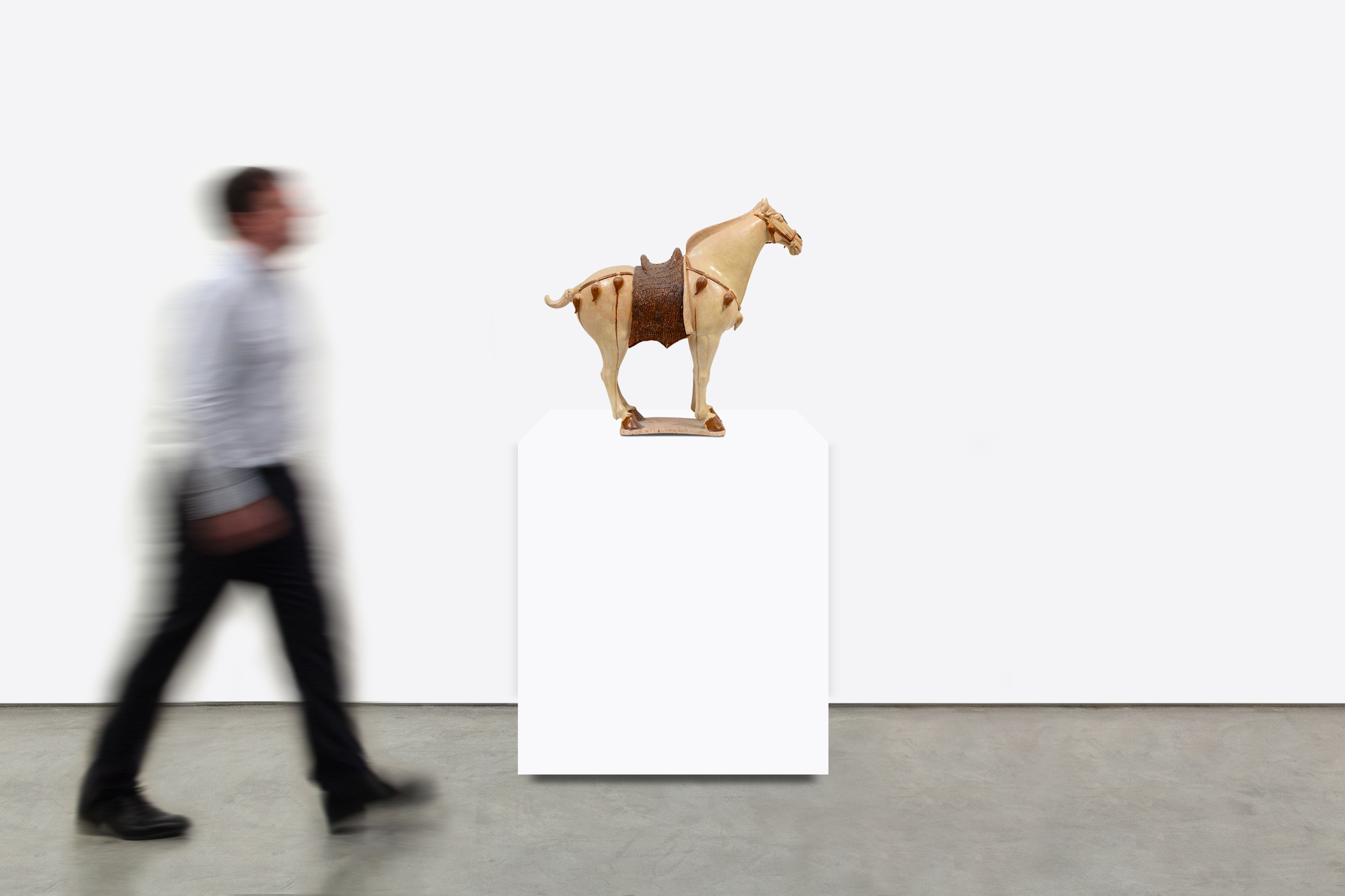סינית







מקור ומקור
אוסף פרטי, קליפורניהבהתאם למאות שנים של מסורת, טקסי הקדרות נשארו חשובים מאוד. משרד ממשלתי נפרד היה קיים עם אחריות לפיקוח על ייצור מרכולתם. באופן רשמי היו מגבלות על מספר המוצרים החמורים וההגבלות על גודל החפצים שיכולים ללוות את הנפטר, על פי הדרגה – הפקידים הבכירים ביותר היו אמורים להיות בעלי מקסימום של 90 צלמיות, לא יותר מ 30 ס"מ גבוה בעוד בני המשפחה הקיסרית הורשו כמה מאות עד כמטר אחד גבוה. עם זאת, כללים אלה הופרו לעתים קרובות. קרובי משפחתו של המנוח האמינו שהם יכולים לשפר את מעמדו של אבותיהם בעולם הבא על ידי מתן mingqi מעבר לצורך, ובכך להבטיח את מזלם הטוב. קרמיקה פיגורטיבית של שושלת טאנג חולקת מאפיינים מסוימים. הצורות מונפשות ודומה לחיים, הנושא מכסה את כל ההיבטים של החיים החברתיים והטקסיים והיקף הדמויות היה קטן למדי למעט כמה עבודות גדולות ומפוארות שהוזמנו לקברי האליטה. דמויות של חצרנים ובדרנים, שחקני פולו והמטיילים האקזוטיים שהגיעו בקביעות לערים הסיניות עם הגמלים הגדולים שלהם הפכו למקום נפוץ, הממחיש את האופי הקוסמופוליטי של הזמנים. מגוון הטפסים מספר לנו כי בעלי מלאכה היו היקף לחדשנות אישית ולא נשלטו על ידי כללים לגבי סגנונות מסוימים. עכשיו מרכולת הקבורה דיברה לא רק על כוח וכוח צבאי, אלא גם על התחכום וההישגים האינטלקטואליים של הנפטר.


